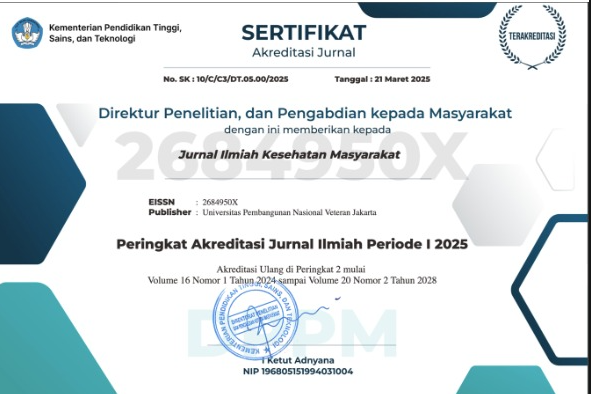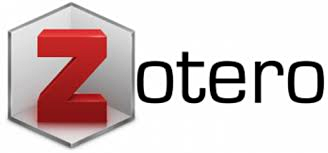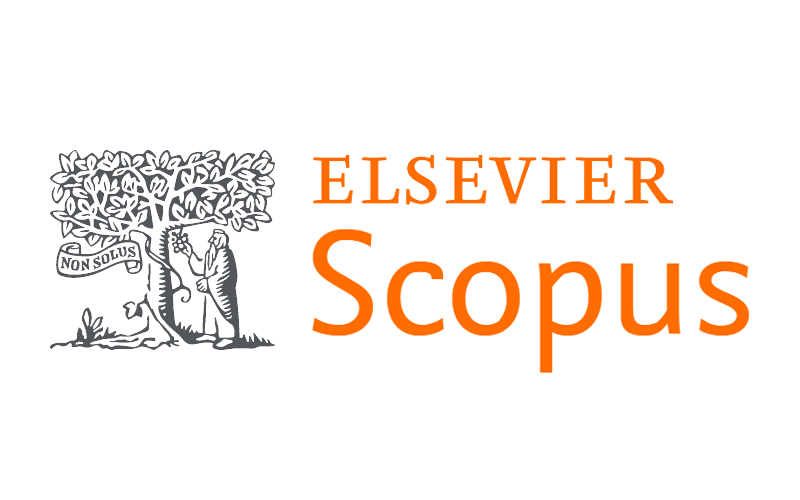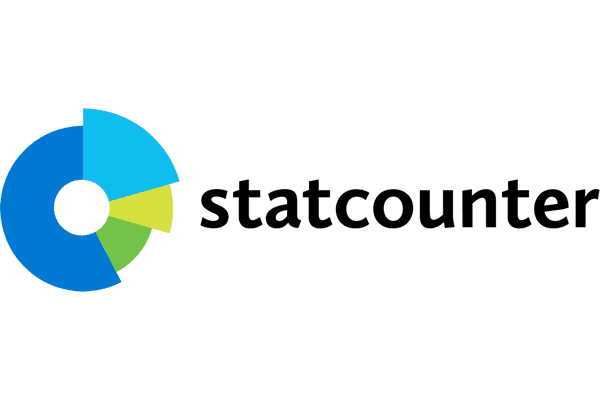Enhancing Knowledge, Attitudes, and Motivation in Stunting Prevention by Community-Based Education
Abstract
Abstract
Background: Stunting is a global public health problem that can impair children's physical and cognitive development. In Indonesia, although the prevalence of stunting has decreased, it is still relatively high. Adolescents, especially adolescent girls, play an essential role in stunting prevention, as their knowledge, attitudes, and motivation can influence the health of future generations. Community-based education, such as Karang Taruna youth groups at the village or kelurahan level, using audiovisual media, is considered adequate for increasing adolescents' understanding and awareness of stunting.
Method: This study used a quasi-experimental method with a one-group pretest-posttest design. The sample was 33 adolescents in Sumberan Hamlet, Sleman, Yogyakarta. The intervention was stunting prevention education using audiovisual media delivered in one one-hour session in October 2024. Data were collected through questionnaires to measure knowledge, attitudes, and motivation which were standardized and analyzed using the Wilcoxon Signed Rank test.
Result: This study showed a significant increase in adolescents' knowledge with a mean difference between pre-test and post-test of 9.26 (p=0.001) and in attitude with a mean difference of 2.33 (p=0.003) after the intervention. However, adolescents' motivation did not increase significantly, with a mean difference between pre-test and post-test of only 0.70 (p=0.274).
Conclusion: Community-based education using audiovisual media effectively improves adolescents' knowledge and attitudes about stunting.
References
World Health Organization. Malnutrition. 2024.
Ministry of Health of the Republic of Indonesia. Pocket Book of the 2021 Indonesian Nutritional Status Study (SSGI) at National, Provincial, and Regency/City Levels. Jakarta: Badan Kebijakan Pembangunan Kesehatan Kementerian Kesehatan RI; 2021.
Sleman Health Office. Sleman Successfully Reduces Stunting. Promkes. 2024.
Ministry of Health of the Republic of Indonesia. Preventing Stunting, Ministry of Health Focuses on 11 Intervention Programs. Badan Kebijakan Pembangunan Kesehatan. 2023.
World Health Organization. Countries in WHO South-East Asia Region commit to adolescent responsive health systems. South-East Asia. 2024.
Handayani F, Gunawan H, Sholahudin F, Zulfa SBK. Pengetahuan, Sikap dan Peran Kader Remaja dalam Pencegahan Stunting. J Telenursing. 2023;5(2):3983–91.
Kementerian Perencanaan Pembangunan Nasional/Badan Perencanaan Pembangunan Nasional (BAPPENAS). Rencana PembangunanJangka Menengah Nasional(RPJMN) 2020-2024 [Internet]. National Mid-Term Development Plan 2020-2024. Jakarta; 2020. Available from: https://www.bappenas.go.id/id/data-dan...dan.../rpjmn-2015-2019/
Supardi N, Fitrianingsih J. Edukasi Tentang Gizi Seimbang Bagi Remaja Dalam Upaya Peningkatan Pengetahuan Mengenai Kebutuhan Gizi Di Wilayah Kerja Puskesmas Somba Opu Education About Balanced Nutrition For Teenagers In An Effort To Increase Knowledge Regarding Nutritional Needs In T. Pandawa Pus Publ Has Pengabdi Masy. 2023;1(3):216–22.
World Health Organization. Adolescent Health. 2024.
BKKBN. Operational Activities of Group-Based Resilience in KB Village Activities. 2023.
Tarigan AHZ, Nugroho IP. Bagaimana Rasa Ingin Tahu Remaja Ditinjau Dari Keinginan Untuk Mengaktualisasikan Diri Dalam Ruang Lingkup Sekolah. J Bimbing Dan Konseling Ar-Rahman. 2019;5(1):24.
Purnamasari NIW, Supariasa IDN, Komalyna INT, Riyadi BD. Pengaruh Penyuluhan Gizi dengan Media Animasi Pencegahan Stunting terhadap Pengetahuan dan Sikap Pengurus Insan Genre Majapahit. Media Publ Promosi Kesehat Indones. 2022;5(12):1578–84.
Ikasari FS, Pusparina I, Irianti D. Media Video Animasi Meningkatkan Sikap Remaja tentang Gizi Seimbang dalam Rangka Mencegah Stunting. Media Publ Promosi Kesehat Indones. 2024;7(1):185–93.
Sugiyono. Metode Penelitian Pendidikan (Pendekatan Kuantitatif, Kualitatif, dan R&D). Bandung: Alfabeta; 2022.
Muchtar F, Rejeki S, Elvira I, Hastian H. Edukasi Pengenalan Stunting Pada Remaja Putri. Lamahu J Pengabdi Masy Terintegrasi. 2023;2(2):138–44.
Salazar LF, Crosby R, DiClemente RJ. Research Methods in Health Promotion. San Fransisco: Jossey-Bass; 2015.
Siswati T, Iskandar S, Pramestuti N, Raharjo J, Rubaya AK, Wiratama BS. Drivers of Stunting Reduction in Yogyakarta, Indonesia: A Case Study. Int J Environ Res Public Health. 2022;19(24).
Adventus MR, Mahendra D, Jaya IMM. Promosi Kesehatan. Jakarta: Universitas Indonesia; 2019. 1–107 p.
Purwaningsih P, Indarwati R, Wahyuni HM. Dampak Efikasi Diri dalam Mencegah Perilaku Seks Bebas pada Remaja. Indones J Community Heal Nurs. 2019;4(1):17.
Mediani HS, Hendrawati S, Pahria T, Mediawati AS, Suryani M. Factors Affecting the Knowledge and Motivation of Health Cadres in Stunting Prevention Among Children in Indonesia. J Multidiscip Healthc. 2022;15(April):1069–82.
Royani C. Remaja Sehat Banyak Makan Buah dan Sayur Melalui Edukasi dalam Pencegahan Stunting di SMK Bina Husada Mandiri Bekasi. JPM Bakti Parahita J Pengabdi Masy Bakti Parahita. 2024;5(1):1–11.
Zakiyanpri W, Lailiyah ul, Armando G, Salsabila R, Theresa S, Anggita P, et al. Edukasi kepada Remaja untuk Mencegah Terjadinya Stunting dari Faktor Kesehatan saat Masa Remaja di SMAN 1 Banyuwangi. J Abdi Masy Indones [Internet]. 2024;4(3):603–10. Available from: https://doi.org/10.54082/jamsi.1151
Sayuti S, Almuhaimin, Sofiyetti, Sari P. Efektivitas Edukasi Kesehatan Melalui Media Video Terhadap Tingkat Pengetahuan Siswa dalam Penerapan Protokol Kesehatan di SMPN 19 Kota Jambi The Effectiveness of Health Education Through Video Media on Students ’ Knowledge Levels in the Application of He. J Kesmas Jambi. 2022;6(2):32–9.
Rinarto DL, Ilmi IMB, Imrar IF. Pengaruh Edukasi dengan Media Sosial Instagram dan YouTube terhadap Pengetahuan Gizi Seimbang. J Ilmu Kesehat Masy. 2022;11(03):287–92.
Nugroho FA, Kusumastuty I, Prihandini ZP, Cempaka AR, Ariestiningsih AD, Handayani D. Pemanfaatan Video Edukasi Dalam Perbaikan Pengetahuan Gizi Pada Remaja. Smart Soc Empower J. 2021;1(3):76.
Wigunantiningsih A, Anggraini Y, Sari RP. Wujudkan Generasi Milenial Bebas Stunting dengan Deteksi dan Intervensi Dini Status Gizi Remaja. Dharma J Pengabdi Masy. 2022;3(1):90–101.
Azarta R, Kurrahman T, Dwibarto R. Pengaruh Edukasi Video Audio Visual terhadap Pengetahuan dan Sikap Ibu Balita tentang Stunting. J Penelit Perawat Prof. 2024;6(5).
Azizah LS. Pengaruh Pemberian Media Video Animasi Terhadap Tingkat Pengetahuan dan Sikap Pada Remaja Status Gizi Lebih di SMAN 1 Pasirian Lumajang. Politek Negeri Jember [Internet]. 2021;7(1):37–72. Available from: https://edeposit.perpusnas.go.id/collection/buku-ajar-dasar-ilmu-gizi-kesehatan-masyarakat-sumber-elektronis/29281
Rehman AU, Bhuttah TM, You X. Linking burnout to psychological well-being: The mediating role of social support and learning motivation. Psychol Res Behav Manag. 2020;13:545–54.
Refky Dermawan, Mohammad Zen Rahfiludin, Budiyono. Pengaruh Media Video Pencegahan Stunting terhadap Pengetahuan dan Sikap Remaja Putri: Literature Review. Media Publ Promosi Kesehat Indones. 2024;7(4):787–94.
Ernawati A. Media Promosi Kesehatan Untuk Meningkatkan Pengetahuan Ibu Tentang Stunting. J Litbang Media Inf Penelitian, Pengemb dan IPTEK. 2022;18(2):139–52.
Kurniatin LF, Zakiyya A. Pendidikan Kesehatan dengan Media Video dan Booklet Pendampingan 1000 Hari Pertama Kehidupan terhadap Tingkat Pengetahuan dan Sikap Ibu Hamil dalam Upaya Pencegahan Stunting. J Kesehat Poltekkes Kemenkes RI Pangkalpinang. 2022;10(1):28–37.






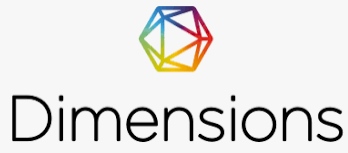


.jpg)
